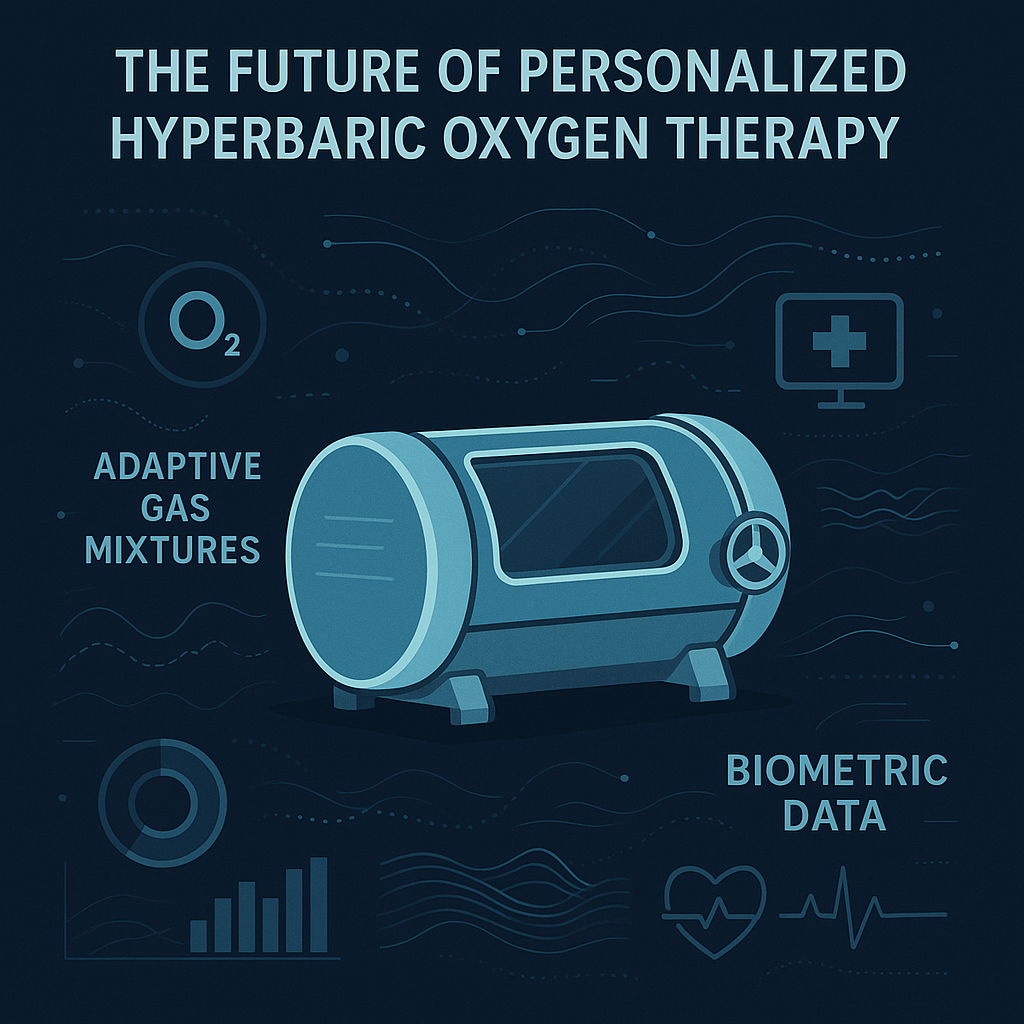Future Directions in Hyperbaric Medicine
Hyperbaric oxygen therapy (HBOT) is on the brink of transformation, evolving into a platform that amalgamates precision medicine with gas dynamics, molecular biology, and digital health. The future of HBOT aims to exploit real-time data and advanced sensor integration to reshape treatment paradigms significantly. Specifically, the development of adaptive gas-mix control systems will allow clinicians to calibrate therapy based on individual patient responses, ensuring that the therapeutic gas environment is tailored to maximize efficacy and minimize adverse effects [Gupta & Somasundaram 2023].
Algorithm-Driven Gas “Cocktail” Design
As the understanding of gas interactions within the body deepens, future implementations of HBOT will see the integration of algorithm-driven gas “cocktails.” These combinations will be rooted in omics-driven profiling which identifies patient-specific responder phenotypes. For instance, specific gas mixtures such as H₂S or Xe can be tailored for patients based on their genetic or metabolic profiles, maximizing therapeutic response while mitigating potential toxicity [Thom 2011].
Omics-Coupled Patient Stratification
The future of HBOT rests on the full integration of multi-omic analyses—genomic, proteomic, and metabolic data—to stratify patients effectively. By identifying key biomarkers linked to treatment responses, clinicians will be able to design individualized gas mixtures, cultivating personalized regenerative therapies that can cater to specific healing processes. This stratification not only optimizes treatment outcomes but also minimizes adverse events associated with high concentrations of oxygen or other therapeutic gases [Munteanu et al. 2021].
Closed-Loop Safety & Toxicity Mitigation
Safety protocols within HBOT are evolving through the implementation of closed-loop control systems that utilize real-time monitoring of physiological markers. Advanced technologies, including continuous EEG and near-infrared spectroscopy, are being used to anticipate and mitigate the risk of central nervous system oxygen toxicity. These systems can automatically adjust chamber pressure or gas composition to prevent adverse neurological outcomes, thereby enhancing the safety profile of HBOT [Heyboer et al. 2017] [Montalbano et al. 2021].
Implications for Regenerative Medicine
The intersection of HBOT and regenerative medicine holds immense potential. With the advent of dynamic gas composition adjustments, therapies can be designed to support stem-cell mobilization, enhance tissue perfusion, and optimize wound healing rates. For instance, studies have shown that adjunctive CO₂ pulsing can significantly boost capillary flow and wound healing speed, providing a critical enhancement over traditional oxygen therapy alone [Gill & Bell 2004].
Additionally, personalized gas mixtures may create immune-tolerant microenvironments conducive to transplantation success, heralding a new era in organ transplantation practices.
Conclusion
In conclusion, the future of hyperbaric medicine is poised for revolutionary changes driven by technological advancements in monitoring and gas delivery systems. As precision medicine continues to reshape therapeutic paradigms, personalized HBOT is anticipated to become a mainstay in regenerative medicine, paving the way for more effective treatments and improved patient outcomes. The integration of complex data analytics with real-time physiological monitoring will pave the way for bespoke therapeutic strategies that not only enhance patient recovery but also ensure safety throughout the treatment process [Leach et al. 1998].
